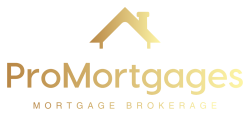Now comes the exciting (and sometimes overwhelming) task of securing a mortgage. Understanding your financing options is crucial, and a key decision you’ll face is choosing between an open or closed mortgage. This blog will delve into the specifics of both types of mortgages in Canada, helping you navigate this vital step towards achieving your homeownership dream.
Demystifying Open and Closed Mortgages: Core Characteristics
Open Mortgages:
- Prepayment Flexibility: An open mortgage offers greater flexibility when it comes to prepayments. You can make lump sum payments towards your principal without penalty, allowing you to accelerate your debt repayment and build equity faster.
- Interest Rate Fluctuations: Open mortgages are typically tied to variable interest rates, which means the interest rate on your mortgage can fluctuate based on market conditions. This can lead to lower interest payments if rates decrease, but also exposes you to the risk of higher payments if rates rise.
- Break Penalty: If you break the terms of your mortgage by paying it off in full before the maturity date, a penalty will be applied. This penalty is typically calculated based on the interest rate differential (IRD) – the difference between the interest rate you’re currently paying and the current interest rate offered by your lender for similar mortgages.
Closed Mortgages:
- Fixed Interest Rate: Closed mortgages come with a fixed interest rate for the entire term of the mortgage (typically 1-5 years). This provides predictability and stability in your monthly payments, regardless of fluctuations in the market interest rate.
- Limited Prepayment Privileges: Closed mortgages typically limit the amount you can prepay towards your principal annually, often expressed as a percentage of the original loan amount (e.g., 10% or 15%). This restriction protects the lender’s interest income over the term of the mortgage.
- No Break Penalty (Usually): If you pay off your closed mortgage in full before the maturity date, there’s usually no penalty (unless you’re within a certain period of the renewal date).
Choosing Between Open and Closed Mortgages:
The decision between an open or closed mortgage hinges on your individual risk tolerance and financial goals. Here’s a breakdown of the factors to consider:
- Risk Tolerance: Are you comfortable with the potential for interest rate fluctuations with an open mortgage? Or do you prefer the stability of a fixed rate with a closed mortgage?
- Financial Goals: Do you anticipate making significant lump sum payments towards your mortgage principal in the near future? If so, the flexibility of an open mortgage might be beneficial.
- Market Outlook: If you believe interest rates are likely to decline, an open mortgage could potentially save you money. Conversely, if you expect rates to rise, a closed mortgage offers protection with its fixed rate.
Additional Considerations:
- Term Length: The term length you choose for your mortgage (typically 1-5 years) will also impact your decision. Shorter terms often come with lower interest rates, but the prepayment limitations on closed mortgages might be less restrictive.
- Interest Rate Premiums: Open mortgages sometimes come with slightly higher interest rates compared to closed mortgages, as lenders factor in the prepayment flexibility.
Open vs. Closed Mortgages: A Scenario-Based Approach
Let’s explore how these factors might play out in real-life scenarios:
Scenario 1: Risk-Averse Homebuyer
- Profile: Sarah is a risk-averse first-time homebuyer. Predictability in her monthly budget is important to her.
- Choice: A closed mortgage with a fixed interest rate would be a suitable option for Sarah. This provides stability and protects her from unexpected increases in monthly payments due to rising interest rates.
Scenario 2: Homebuyer with Lump Sum Payment Plans
- Profile: David is a young professional who expects to receive a significant bonus in the coming year. He plans to use this lump sum for a large prepayment on his mortgage.
- Choice: An open mortgage would be a better fit for David. The prepayment flexibility allows him to make a lump sum payment without penalty, accelerating his debt repayment and saving on interest in the long run.
Scenario 3: Uncertain Market Outlook
- Profile: Michael is buying a home amidst economic uncertainty. He’s unsure about the direction of interest rates.
Choice: This scenario is trickier. If Michael leans towards expecting rising interest rates, a closed mortgage with a fixed rate can offer security. However, if he anticipates rates to fall, an open mortgage could potentially save him money.









 by Bhasha Infotech
by Bhasha Infotech